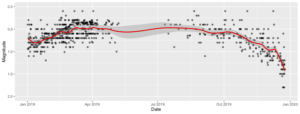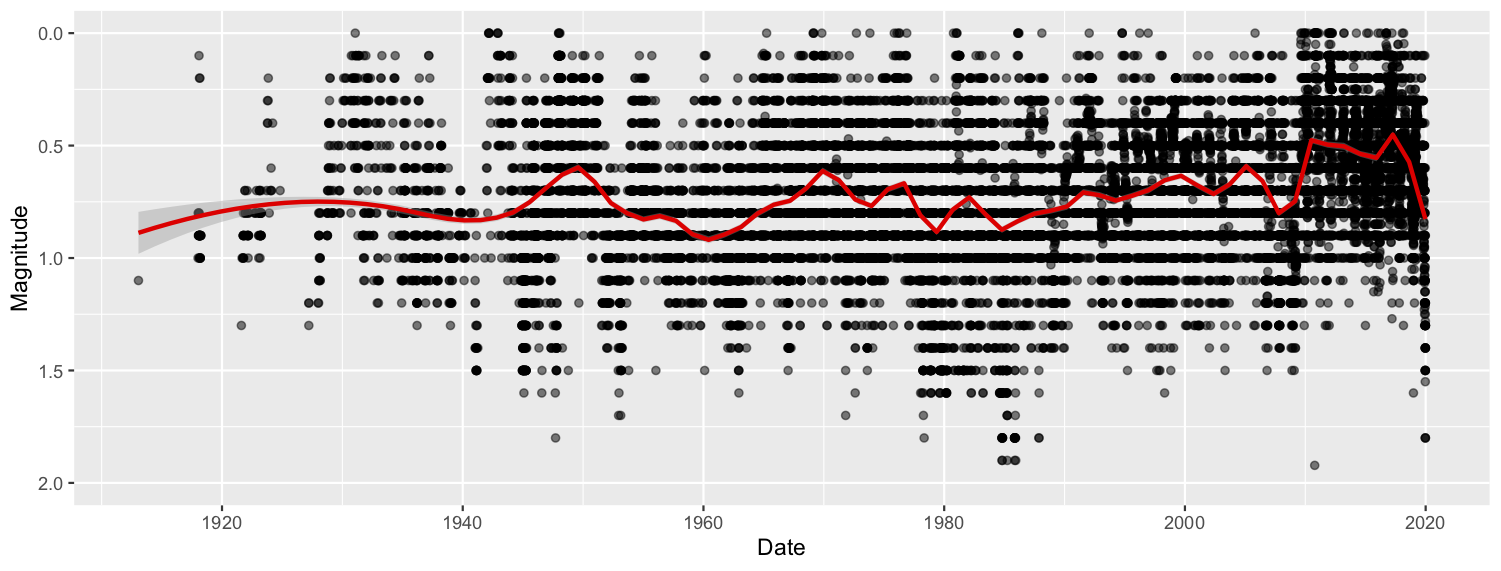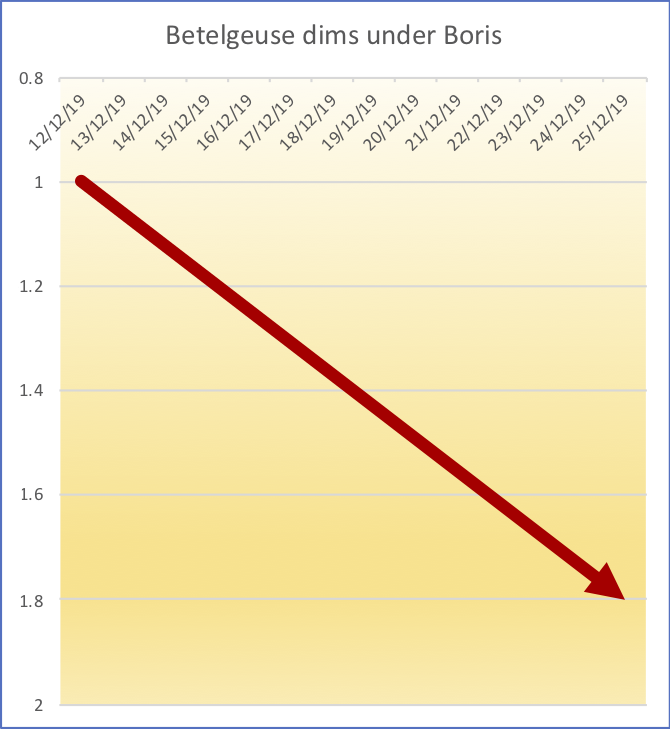Before their light / The stars grew dim
Betelgeuse, the bright red star at the base1 of Orion, has suddenly dimmed, enough that people who aren’t astronomers may be able to tell by looking at it.
Here’s a simple graph. Yes, the y-axis goes down rather than up. Astronomers are weird that way.
Here’s a more detailed version of the same thing, from the AAVSO website, which includes all the available observations. You can see that the latest dimming did pretty much coincide with the UK election2
As StatsChat readers will know, it’s unwise to draw strong conclusions from a short time series if a longer one is available. I asked the AAVSO webserver for all its Betelgeuse data. I trimmed off some clearly outlying values (if it weren’t Christmas I would have asked an astronomer first).
Here’s the graph for this year

The gap in autumn/winter is because Betelgeuse is out during the day at that time of year, and so isn’t visible except in Antarctica.
Here’s all the values between 2 and -1 magnitude, back as far as AAVSO collects. There’s been a decrease since

So, while the current dimming is extreme, it also looks like this is a thing Betelgeuse does. That’s what astronomy twitter is saying.
There’s been media coverage of the dimming, including speculation that the star is about to go supernova. Mostly, the reports have been good: saying that it could go any time, but pointing out that ‘any time’ on astronomical time scales means any time between 700 years ago and 100,000 or so years in the future.
1. StatsChat is in the southern hemisphere
2. Well, except for the time lag of about 700 years in the light getting here. They must have very good long-range polling on Betelgeuse. They probably use MRP.
Thomas Lumley (@tslumley) is Professor of Biostatistics at the University of Auckland. His research interests include semiparametric models, survey sampling, statistical computing, foundations of statistics, and whatever methodological problems his medical collaborators come up with. He also blogs at Biased and Inefficient See all posts by Thomas Lumley »


As a red giant, if Betelguese’s centre was put where the sun is now the surface would be ‘somewhere’ beyond Jupiter, but in up to 1 million years time it will explode as a supaNova. Quite something for a star that close, as before it explodes it expands in size so that to us it will seem as big as a full 🌒 moon in the night sky.
5 years ago